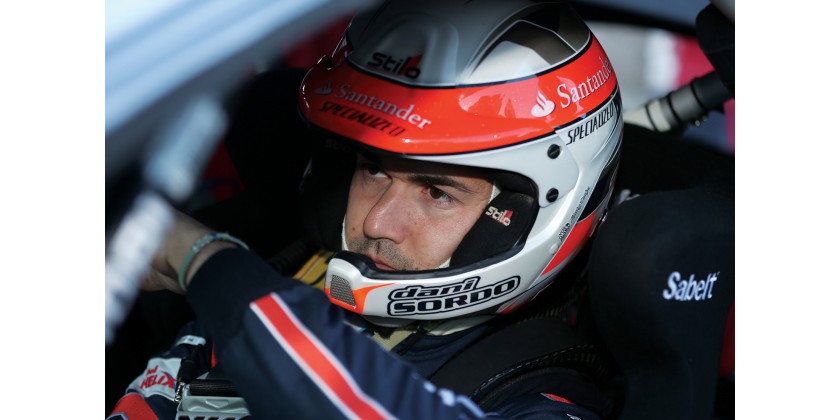Helmets
1.1 Standards
All drivers competing in circuit competitions, hill-climbs or rallyspecial stages, entered on the FIA Calendar, must wear crash
helmets homologated to one of the standards listed in FIA Technical List N° 25.
When the use of a Frontal Head Restraint system (FHR), according to Article 3 below, is mandatory, only helmets approved in
accordance with FIA standard 8858 (Technical List N°41), 8860 (Technical List N°33) or 8859 (Technical List N°49) are authorised.
Helmets homologated to the FIA Standard 8860 - Advanced Helmet Test Specification (Technical List N°33), must be worn by
drivers in:
- the Formula One World Championship,
- the FIA World Rally Championship, if listed as priority 1,
- the WTCC,
- the WEC,
- the FIA World Rallycross Championship, if they are listed as permanent drivers or are entered by a Team participating in the FIA World Rallycross Championship for Teams,
Important: see the end of the Appendix for the changes which will enter into force on 1 January 2017.
- the FIA GT World Cup,
- the international series for F2, GP2, GP3 and F3 cars.
All drivers taking part in the FIA Formula One World Championship must use the 2011 F1 Visor Reinforcement Panel for FIA 8860 Helmets.
It is strongly recommended that all drivers in the World Rally Championship, the World Rallycross Championship and in those international series for which the technical regulations include crash structure requirements from the FIA Formula One, F3 or F3000 technical regulations wear helmets homologated to the FIA Standard 8860.
Conditions of use
Drivers of open cockpit cars must wear full-face helmets, of which the chin bar is an integral part of the helmet structure and is tested to an FIA-approved standard. This measure is recommended for historic open cockpit cars and Autocross SuperBuggy, Buggy1600 and Junior Buggy. Any tear-offs attached to visors may not be thrown onto the track or the pit lane.
Full visors fitted on the full face helmets which are listed in Technical Lists N°33, 41 and 49 must be labelled with an FIA sticker. The implementation dates are:
• Visors manufactured as from 01.01.2016 must have an FIA sticker.
• Visors manufactured before 31.12.2015 do not have to be labelled with an FIA sticker and may still be used without one.
Drivers and co-drivers in closed cockpit cars who wear full-face helmets must be able to pass the following test(1), in order to ensure that appropriate access to the airway of an injured driver is possible:
- the driver is to be seated in his car, with helmet and FIAapproved head restraint in place and attached and safety harness buckled.
- with the help of two rescuers, the chief medical officer of the competition (or, if present, the FIA medical delegate), must be able to remove the helmet with the driver’s head maintained permanently in a neutral position.
If this is impossible, the driver will be required to wear an openface helmet.
Drivers must contact the FIA medical delegate or the Chief Medical Officer in order to carry out the above test before the start of the event.
(1)for historic cars, compliance is recommended.
Modifications
No helmet may be modified from its specification as manufactured, except in compliance with instructions approved by
the manufacturer and one of the FIA-listed standards organisations which certified the model concerned. Any other modification will render the helmet unacceptable for the requirements of the present
Article 1.
1.4 Maximum weight and communications systems
- Helmet weights may be checked at any time during a competition and must not exceed 1800 g for a full-face type
or 1600 g for an open-face type, including all accessories and attachments.
- Helmet-mounted radio speakers are prohibited in all circuit and hill-climb competitions, excluding Rallycross and Autocross competitions (earplug-type transducers are allowed).
Applications for waivers, on medical grounds only, may be made through the driver’s ASN’s Medical Commission. The fitting of microphones may be done only in respect of Article 1.3.
Decoration
Paint can react with helmet shell material and affect its protective capacity; therefore, where a manufacturer provides guidelines or restrictions on the painting or decoration of helmets, these must be followed, using only paint specified by them (air drying acrylic, polyurethane enamel or others) and preferably a painter having their approval. This is particularly important for injection-moulded shells, which are not usually suitable for painting.
The shell being painted should be efficiently masked, as paint penetrating the interior can affect the performance of the helmet liner.
Paints requiring heat curing should not be used and any process should not exceed the maximum temperature of conditioning of the helmet in the standard to which it is approved.
The manufacturer’s instructions should also be consulted for any considerations on the use of stickers and transfers.

